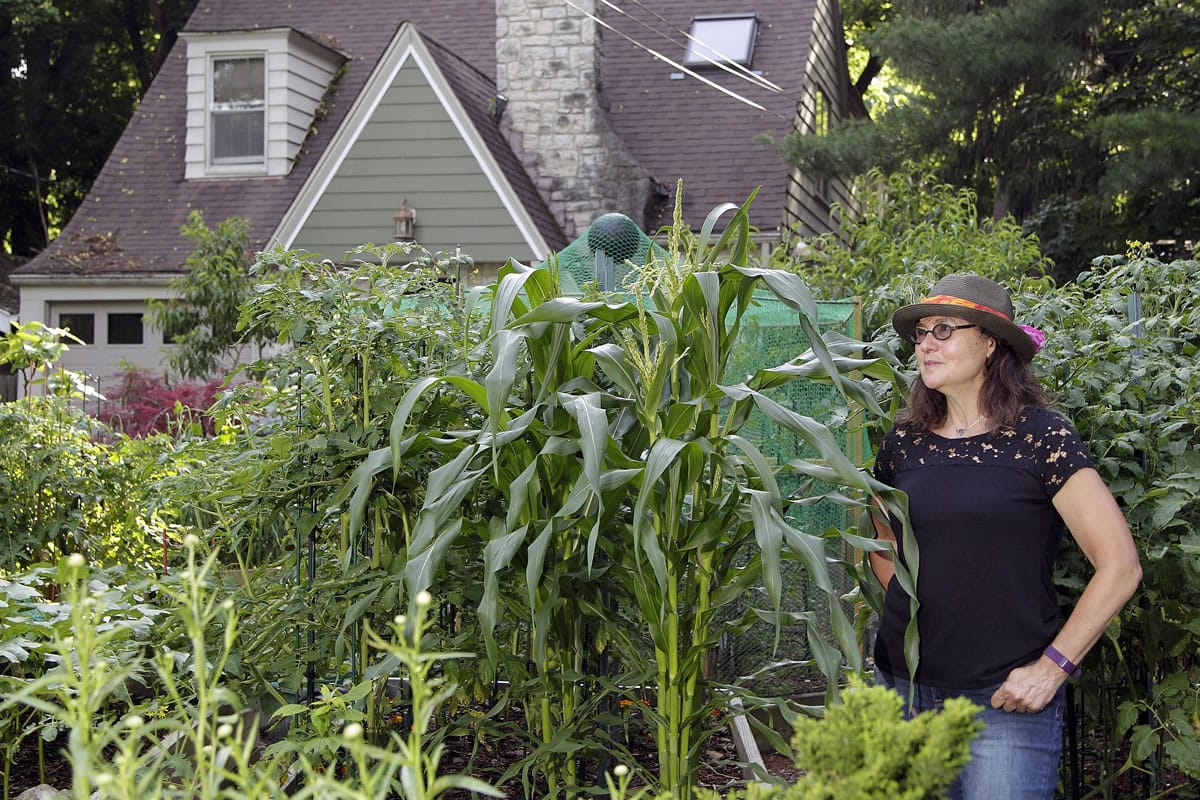For decades, the perfectly mowed lawn has endured as an American pursuit. But today, a growing number of homeowners are rethinking this default landscape feature as they downsize or replace these grassy spaces with other more productive and often less time- and chemical-consuming alternatives.
A Pittsburgh couple chose to exchange their shaded, failing grass for a thriving, no-mow moss lawn. A long-time Cincinnatian installed dozens of towering teepees to support his favorite flowering vines. And a Columbus, Ohio, philosophy professor ripped out her front lawn — the only sunny spot on her property — to install multiple raised-bed vegetable gardens.
According to Susan McCoy, author of the 2015 Garden Trends Report, more homeowners are rebelling against horticulture norms.
“We started seeing this trend with the backyard chickens and front-yard vegetable gardens, where people were forgoing lawns for more productive spaces,” McCoy says.
• Mossy magic: Elaine Stept of Point Breeze, a tree-lined Pittsburgh neighborhood, doesn’t consider herself a rebel gardener. She says she and her husband, Larry, were just so frustrated trying to grow grass under her shade trees that she welcomed landscape designer Phyllis Gricus’ solution of a moss lawn.
“Our two 100-year-old oaks gave off so much shade you couldn’t even grow shade grass,” says Stept.
With Gricus’ help, they tore out what was left of the scraggly lawn, ordered a variety of mosses, made a slurry of the moss particles, then painted the mixture across the yard’s amended soil.
“If you already have moss growing in a lawn, it doesn’t take much more to encourage Mother Nature along,” says Gricus. Still, she cautions, it takes some patience.
While the Stepts waited the four to five months for the moss to begin growing, they fielded neighbors’ questions about their muddy front yard.
Finally, their moss started filling in, and the neighbors began to see and understand what the couple were planning. In fact, more and more neighbors — especially those with shady lawns — started taking interest and even donated moss pieces from their own yards.
• Vertical rebellion: “We’re not trying to irritate people,” says Dan Deters of Oakley, a blue-collar-turned-upscale neighborhood of Cincinnati. “It’s not like we’re putting toilets out front and filling them with flowers.” Instead, he installed 50 teepee-style trellises to support flowering vines of wisteria, roses, clematis and honeysuckle. His green trellis botanical garden, as he calls it, spans his 80- by 100-foot property and the adjoining properties of four boardinghouses that he owns and manages for 20 developmentally disabled adults.
“My residents love it, and as the saying goes, nature does help nurture when it comes to their mental health,” Deters says.
A sale on wisteria prompted Deters’ vertical garden. He had always dreamed of growing wisteria but considered it too expensive at $50 a plant. So when a big box store offered them at $20 for a three-plant container, Deters purchased 20 pots and took them home to the property he cared for when his grandmother owned it. For the next 18 months, he experimented with trellis materials and heights.
In 2012, the “overnight appearance of 50 trellises” generated opposition from some neighbors, he says, so he posted signs that read, “Please give the plants a chance,” and encouraged neighbors to be patient until the plants matured and covered the stark teepees. He created a “Green Trellis Garden” Facebook page, printed an informational brochure and worked with the Oakley Community Council to design the trellises within the city code.
• Veggies in front: For years, philosophy professor Tamar Rudavsky and her husband, Richard Brody, battled over turf. Brody preferred a grassy lawn for a play space for their kids, but Rudavsky wanted a lush vegetable garden to provide flavorful, healthful food for the family.
“I think lawns are ridiculous,” she says.
When the couple became empty nesters in 2006 and moved to a smaller home with a shady backyard in Columbus, Ohio, Rudavsky gained ground in their turf war as she negotiated for a front-yard vegetable garden. Within two weeks of moving in, she dug up the front lawn and planted her first crops.
Since their property is highly visible along a busy bike trail, Rudavsky gave more thought to aesthetics in the garden’s design. First, she placed raised beds in a geometric pattern: Eight rectangular beds radiate from one shaped as an octagon, which is in the center.
Throughout the garden, she intersperses color with sunflowers, marigolds, canna lilies, red trellises, patches of purple and green leaf lettuce and many other ornamental edibles. When the plants wither later in the season, Rudavsky has a curbside border of flowering perennials along a split rail fence to mask the garden.
Rudavsky has become an edibles crusader by example as hundreds of bikers pass to admire the vegetable gardens.



